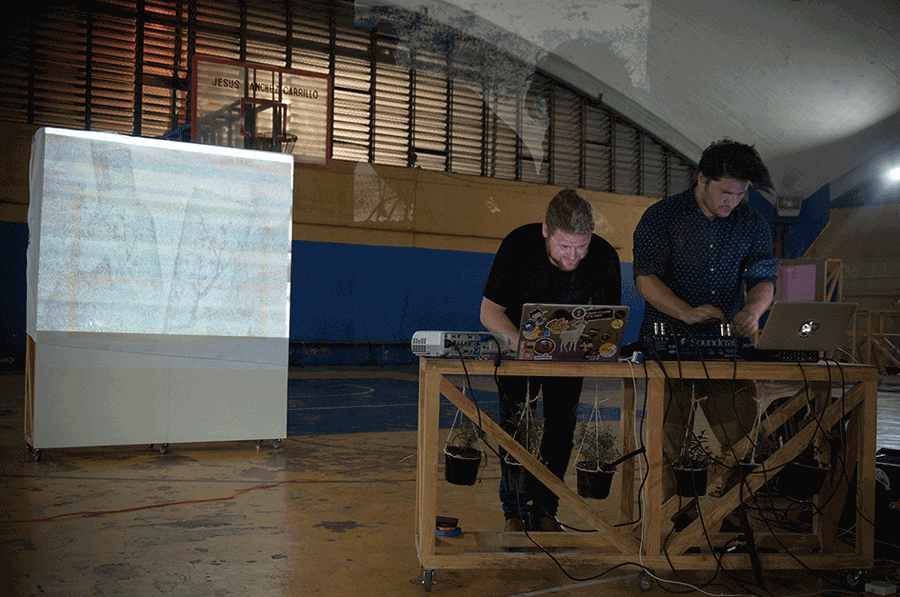Swan_Panda (2015-Present)

Since 2016 Swan_Panda has used weather stations to input real time weather data (usually from multiple locations) into their lived coded performance. Since 2019 they have been using the TeleAgriCulture Platform for this.
By critically engaging with weather data, Swan Panda places an emphasis on the Anthropocene and how this can be represented in artistic practice. This research practice aims to contribute new knowledge to the important project of imagining new and critical forms of art production in the age of the Anthropocene, which directly engage the viewer with the topics that surround it.
What does the Anthropocene look like? Should it be described as a singular decisive moment, or a series of banal everyday events? How implicit can an individual feel within such an evolving and accumulative system? With recent growth in natural and human caused catastrophes, there seems to be need for refinement and redefining of how art and culture responds to such questions. The artist collective Swan Panda explores the phenomenon of catastrophe, particularly The Anthropocene, through the lens of performative digital arts practice, presenting projects that interface the weather with digital systems, remediating atmospheric data with audio-visual performance tools, to reconfigure how we access and therefore, analyse such phenomena.
Since industrialisation, weather has been perceived in the general public as rather banal, except for particularly abnormal and significant events. As such events tend to be catastrophic by nature, at each event, new methods or representation and response are required to productively respond to them. Henri Bergson claimed that we have to change our way of thinking when facing such new events and this can also be contextualised to discuss how artists represent these phenomena. Like most ‘new’ art forms:
“The idea that, for a new object, we might have to create a new concept, perhaps a new way of thinking, is deeply repugnant to us.” (Bergson, 1907)
Much of the motivation for this research stems from an artistic interpretation of common perceptions by the public and the media in relation to The Anthropocene, with the goal to create objects of convergence between natural and digital systems that both coexist and evolve symbiotically. Swan Panda formed in 2014 as a transdisciplinary research collaborative with a general mandate to highlight and reconfigure public understandings of environmental phenomena, such as climate change and explore new ways to build empathy for our impact on such phenomena, using performance, intermediality and networked digital technology as prosthetic devices to connect our human condition with our ongoing impact on ecological processes and raise awareness about the Anthropocene.
Consisting of Julian Stadon and Jorge Ramirez, Swan Panda use a combination of open hardware, software and live programmed audio-visual compositions, in order to challenge contemporary weather data aesthetics, using a range of aesthetic conventions such as glitch aesthetics, gif animation, sampling and live coding, also known as algorave, to do so. (McLean & Dean, 2018)

